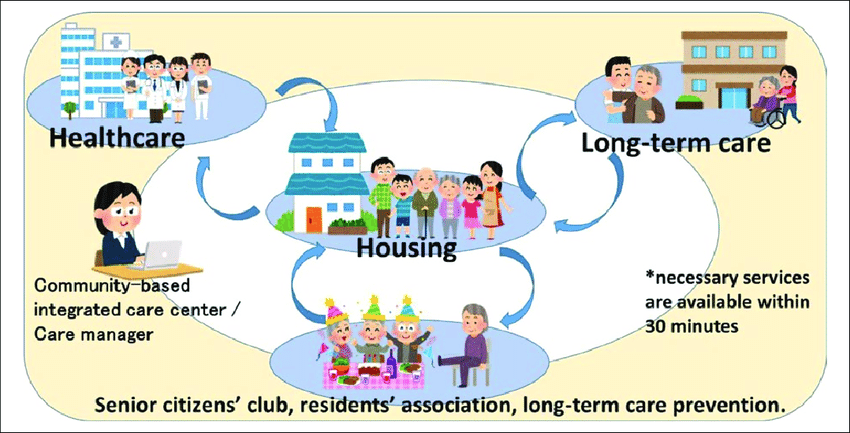What is Integrated Health and Wellness?
This article discusses how 'integrated' and 'integrative' health are different, what 'health' and 'wellness' means, and examples of each.

When it comes to integrated health and wellness, we may also come across other similar terms such as integrated care, integrated health, integrated health systems and integrated health services. We may also come across the use of ‘integrative’ and ‘integrated’. How are they all different?
In this article, I talk about
- How ‘integrated’ and ‘integrative’ are different (hint: not much different)
- What ‘Health and Wellness’ means
- The two things ‘Integrated Health and Wellness’ often refers to
- Real-life examples of those two things in action
How ‘integrated’ and ‘integrative’ are different
Actually, these two terms are not that much different. At the moment, they appear to be used interchangeably. To back this up, there is no current consensus on how they are distinct in the medical literature. What is important is that they are both used to capture the essential idea of ‘coordinating’ and ‘combining’ either different health services or different aspects of health, together.
What is ‘Health and Wellness’?
Health. According to the World Health Organization, health is “a state of complete physical, mental and social well-being and not merely the absence of disease or infirmity.”1 Health here doesn’t just mean not having an illness or be suffering from mental/ physical weakness. Health is also about well-being.
Wellness. According to The Global Wellness Institute, wellness is “the active pursuit of activities, choices and lifestyles that lead to a state of holistic health”.2 You most probably would have engaged in wellness activities before, such as exercise, eating a healthy diet or practising mindfulness.

In short, health is a state of well-being; wellness is the process of attaining that state of well-being.
The two things ‘Integrated Health and Wellness’ often refers to
Definition 1: Combining aspects of complementary and alternative medicine (CAM) with conventional medicine.
CAM includes massage, acupuncture, and mind-body therapies. Integrated Health and Wellness thus refers to delivering CAM together with conventional medicine. This is often done to provide more holistic care for the patient.
Examples
There is an increasing attention focused on evidence-based CAM to control pain and anxiety from acute and chronic disorders. CAM is currently being studied as a more cost-effective substitute for painkillers and anxiety-relieving medications.

For instance, studies have been done to evaluate the effectiveness of CAM in relieving anxiety and pain before and after operations in cardiac patients.3 Similarly, trials have been done among cancer patients to test CAM’s impact on relieving treatment-related pain. 4 There is also more attention directed towards using integrative health and wellness in pain management for military veterans, as well as incorporating them as part of programmes to promote healthy lifestyles.
Currently, results are mixed. However, there is increasing consensus among both clinicians and non-clinicians that CAM holds much potential amidst a global shift towards more holistic, patient-centred care.
Definition 2: coordination of health care services to provide more patient-centred, streamlined care.
This second definition is more commonly associated with:
- integrated care
- integrated health
- integrated health systems
- integrated health services
When people talk about this second definition, what they’re talking about is really is all of the above four bullets. They mean essentially the same thing. In this section, I will use ‘Integrated Care’ to represent the above four terms because it is more commonly used. ‘Integrated Care’ is slightly different from ‘Integrated Health and Wellness’, and here you might start to understand why these two terms are often conflated.

There are usually five broad features of Integrated Care:
- Coordinates health systems around the holistic needs of the individual, their caregivers and family.
- Bridges healthcare institutions located along the continuum of care seamlessly across settings.
- Facilitates cooperation between healthcare disciplines across the continuum of care.
- Focuses on early community detection and prevention of disease.
- Ensures cost-effectiveness of healthcare system in the long run.
Why is there a global shift towards Integrated Care? Globally, we’re all living longer. This means countries have to adapt to ageing populations and a multiplicity of chronic conditions. Integrated Care appears to be the current answer.
Examples
- The Hospital-2-Home initiative in Singapore.5 A programme that facilitates the discharge of patients back home. Instead of being admitted into a community hospital or nursing home for rehabilitative care, patients can now turn to the community. They can now tap on a multi-disciplinary team in the community to receive rehabilitation and nursing in the comfort of their own homes.
- Community-based Integrated Care Centre in Mitsugi, Japan.6 A system focused on prevention services. Families, neighbours and volunteers are trained to provide care for elderly with mild disabilities. For the elderly with severe disabilities, medical doctors, nurses, physical or occupational therapists visit them and assist them in their own homes.
- Harris County Community Behavioural Health Program (CBHP) in Houston, USA 7 Hospital psychiatrists are assigned to community health centres to provide psychiatric services, psychotherapy, substance abuse screening, counselling and treatment. These services are offered together with other primary care staff to provide more holistic treatment.
Integrated Health and Wellness and Integrated Care
It’s easy to get confused between these two terms. From what I understand, they are both guided by similar principles of delivering care. Both terms involve coordination between disciplines. More centrally, both are all about delivering more holistic care to patients.

How are these two terms different, then? I argue that Integrated Health and Wellness offers a set of practical methods to offer holistic care to patients that can be provided within integrated care setting. On the other hand, Integrated Care encompasses a larger, systemic infrastructure that provides holistic care to patients in a multitude of ways. These ways include combining CAM with conventional medicine, offering streamlined community care or rehabilitative care for patients in their own homes.
- https://www.who.int/about/who-we-are/constitution ↩
- https://globalwellnessinstitute.org/what-is-wellness/ ↩
- Johnson, J.R., Crespin, D.J., Griffin, K.H. et al. The effectiveness of integrative medicine interventions on pain and anxiety in cardiovascular inpatients: a practice-based research evaluation. BMC Complement Altern Med 14, 486 (2014). https://doi-org.libproxy1.nus.edu.sg/10.1186/1472-6882-14-486 ↩
- Johnson JR, Crespin DJ, Griffin KH, Finch MD, Dusek JA. Effects of integrative medicine on pain and anxiety among oncology inpatients. J Natl Cancer Inst Monogr. 2014;2014(50):330-337. doi:10.1093/jncimonographs/lgu030 ↩
- Hospital-to-Home programme has helped around 8,000 patients https://www.straitstimes.com/singapore/health/public-hospital-transitional-care-programme-has-helped-around-8000-patients ↩
- Hatano, Y., Matsumoto, M., Okita, M., Inoue, K., Takeuchi, K., Tsutsui, T., … Hayashi, T. (2017). The Vanguard of Community-based Integrated Care in Japan: The Effect of a Rural Town on National Policy. International Journal of Integrated Care, 17(2), 2. DOI: http://doi.org/10.5334/ijic.2451 ↩
- Begley, C. E., Hickey, J. S., Ostermeyer, B., Teske, L. A., Vu, T., Wolf, J., Kunik, M. E., & Rowan, P. J. (2008). Integrating behavioral health and primary care: the Harris County Community Behavioral Health Program. Psychiatric services (Washington, D.C.), 59(4), 356–358. https://doi-org.libproxy1.nus.edu.sg/10.1176/ps.2008.59.4.356 ↩
Stay updated on the best insights from public health professionals.